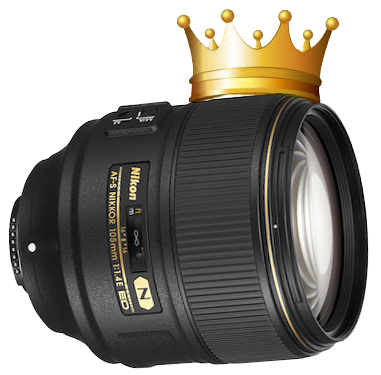Geek Articles
Nikon 105mm f/1.4 E MTF Bench Tests
Joey recently wrote an article about his new crush, the Nikon 105mm f/1.4 E lens, and has been in the lab about every other day since then, asking me if I’ve run the MTFs yet. “You’re going to be blown away,” he says. And every other day I tell him, “I don’t get blown away very often.”
So finally Friday we had time to run the bench tests, and, well, I’m blown away. From an MTF standpoint, this is the sharpest f/1.4 lens Nikon has made. It may be the sharpest f/1.4 lens, period.
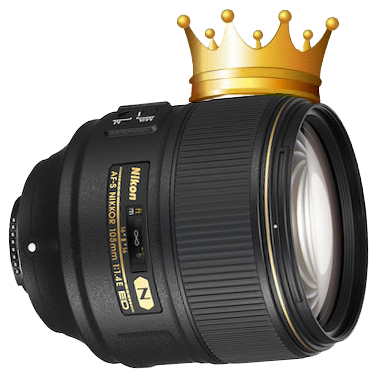
Let me get the usual disclaimer out of the way first, so that someone online can not read it and then talk about how my review is incomplete. This is not a lens review. There are 762 different places you can read a lens review, and this isn’t one of them. There is one place you can see the MTF results for ten copies of the lens, and you’re here. What follows is the MTF test results for ten copies of the lens, not a lens review.
Optical Bench MTF Results
I’m going to start by just putting the MTF results for the Nikon 105mm f/1.4 ED lens up her all by itself because truly it’s a thing of beauty. Everyone look for a minute. A quiet, “Ooooohhhh-ahhhhh” would be appreciated.
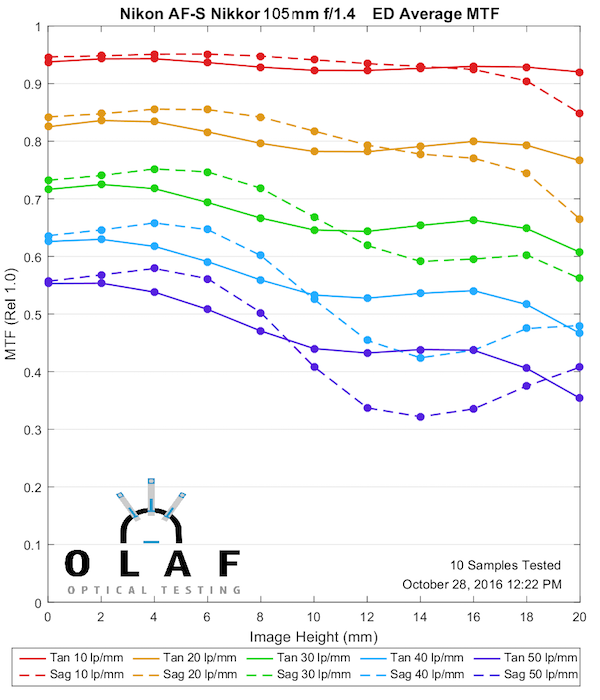
Olaf Optical Testing, 2016
The center resolution is excellent for a f/1.4 lens, which surprised me a bit because most newer Nikon lenses have been willing to give up a little center resolution to maintain good resolution all the way to the edges. Like most newer Nikon lenses, this one does indeed keep superior resolution all the way out to the edge.
This is a spectacular performance, especially for a lens type which hasn’t been available previously in any major mount. It also makes it a bit difficult to give you comparisons since there aren’t any other 105mm f/1.4 lenses for me to put up against it. So we’ll start by comparing it to some 85mm f/1.4 lenses. This isn’t quite as much of a stretch as the numbers suggest since the Nikon actually is 101mm at infinity, not 105mm.
Compared to 85mm f/1.4 Lenses
The Nikon 85mm f/1.4 G lens is an excellent example of what we’ve been seeing from Nikon primes the last 4 or 5 years: not quite as sharp as it’s competitors, but very smooth and even from center to edge. The 105mm f/1.4 keeps that smooth even look, but is far sharper.
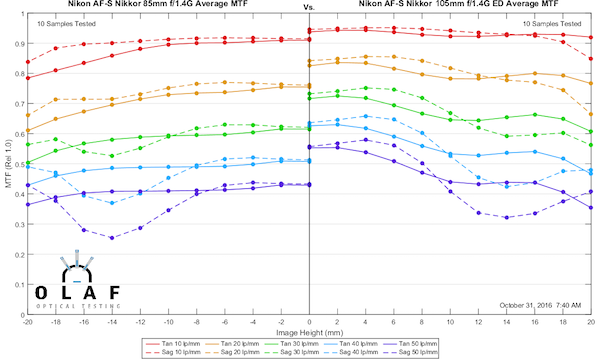
Olaf Optical Testing, 2016
The Zeiss 85mm f/1.4 Otus is arguably the sharpest 85mm wide-aperture lens available. It is, indeed a little sharper than the Nikon 105mm f/1.4, at least in the center of the frame. Away from center it’s still a tiny bit sharper. But at double the price of the Nikon, it probably should be. So for everyone complaining about the price compared to other Nikon primes, well, consider the price compared to an Otus. It seems more reasonable that way.
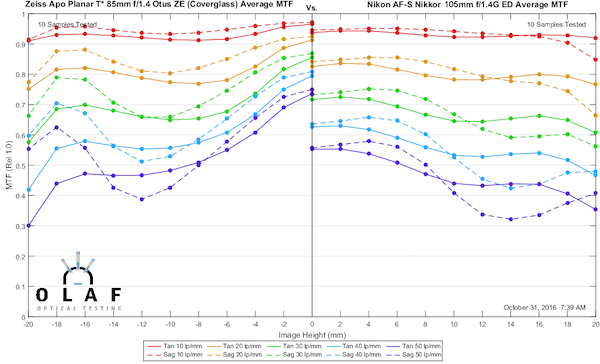
Olaf Optical Testing, 2016
Compared to 100mm f/2.8 Lenses
Two full stops of aperture difference make this a very unfair comparison. You would expect a lens at f/2.8 to be far better than a lens at f/1.4. But hey, life isn’t fair, and I’m looking for any reasonable comparison here. The focal lengths are about the same, so I’m going with it.
The Nikon 105 f/2.8 AF-S VR Micro is a far older lens design and is sharper at macro distances than at infinity. I was still surprised that the 105mm f/1.4 ED is flat out sharper at f/1.4 than the 105 Micro Nikkor is at f/2.8. That’s really impressive.
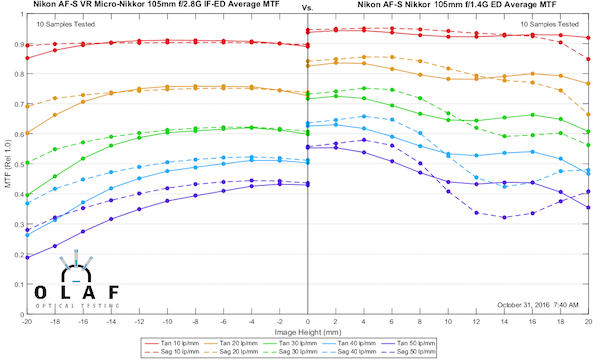
Olaf Optical Testing, 2016
Nikon shooters always seem to think I make a comparison to make their lenses look bad, so I reached down and got the Canon 100mm f/2.8L IS Macro lens out for this comparison, because, well at f/2.8 and as one of Canon’s better lenses, this comparison should keep the Nikon fanboys certain I hate their brand, right? Wrong. Even at f/1.4, the Nikon lens is nearly as sharp as the Canon at f/2.8. That’s just ridiculous.
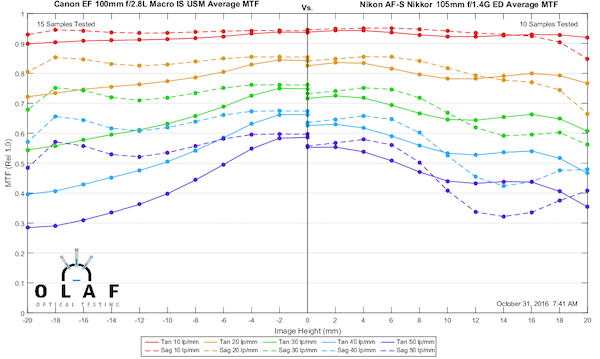
Olaf Optical Testing, 2016
One Last Comparison
OK, I’ve said for a long time one of my favorite focal lengths for portraits, etc. was 135mm. The Sony 135mm f/1.8 would make a spectacular comparison, but I don’t have data on it. I do, however, have data on one of my all-time favorite lenses, the Canon 135mm f/2.0 L. Again, despite giving up a stop of aperture, the Nikon 105 is a bit better at f/1.4 than the Canon is at f/2.0 in the center, perhaps a tiny bit behind in the outer half of the image. But that’s giving up a full stop of aperture sharpness.
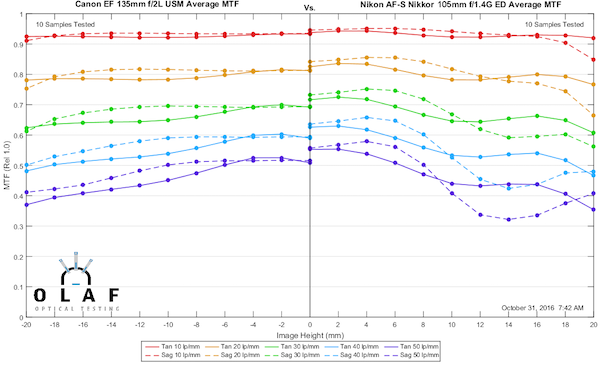
Olaf Optical Testing, 2016
Sample Variation
Sample variation with wide-aperture lenses can be a weak point. The 105mm f/1.4 wasn’t bad by any means, although you can see that off-axis there is some variation indicating there are some copies with a bit of field tilt, but overall sharpness variation is good.
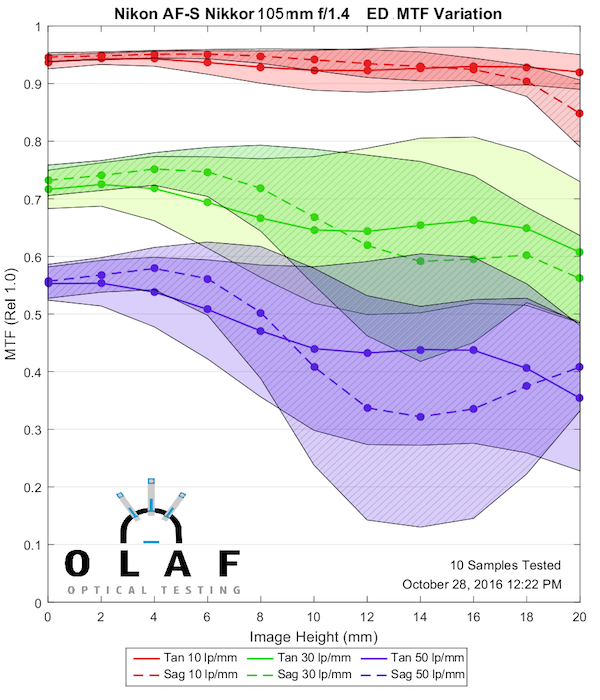
Olaf Optical Testing, 2016
For comparison, here is the variation graph for the Nikon 85mm f/1.4 which has small copy-to-copy variation. The 105 is as low in the center, meaning overall sharpness doesn’t vary much, but wider off-axis, meaning there are some slight decenters or field tilts in our sample population, but none that were clearly bad.
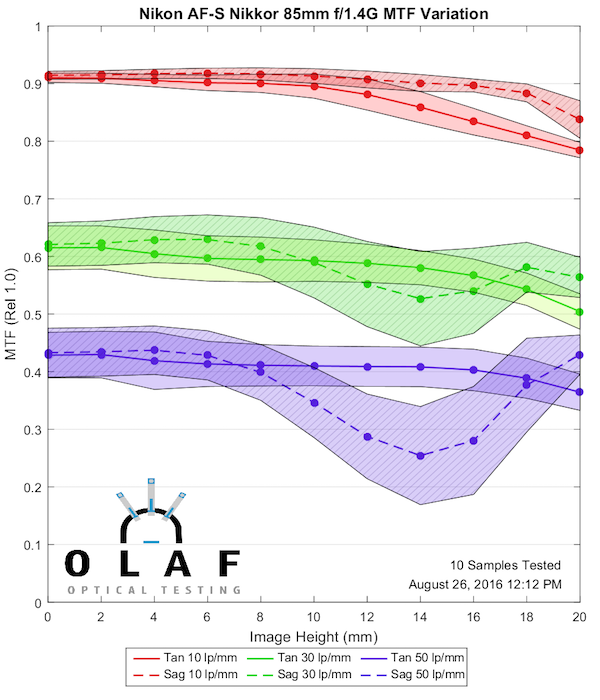
Olaf Optical Testing, 2016
Summary
The optical bench confirms very nicely what the early reviews have said: this is an exceptionally sharp lens edge-to-edge. Optically, it’s probably the best thing Nikon has put out in several years; it’s a genuinely world-class optic. It’s not inexpensive, but it is less expensive than a lot of other lenses that have optical quality like this.
Roger Cicala and Aaron Closz
Lensrentals.com
November, 2016
Addendum: OK, I had a moment of weakness and bowed to the requests for a couple of further comparisons. No more, though, OK? I really have to, like, do work and stuff to support this hobby of mine. Remember, again, the Nikon is spotting these other two lenses a full stop of aperture. In theory, it should be much better at f/2.0.
Also, for those who want stop-down tests. No. I’m sorry, but really, I’ve got stuff I need to do. Olaf is getting busier and actually has like revenue generating activities, and stop-downs are another full day of testing. There’s just not time.
Nikon 105mm f1.4 v Zeiss 100mm f/2 Makro-Planar
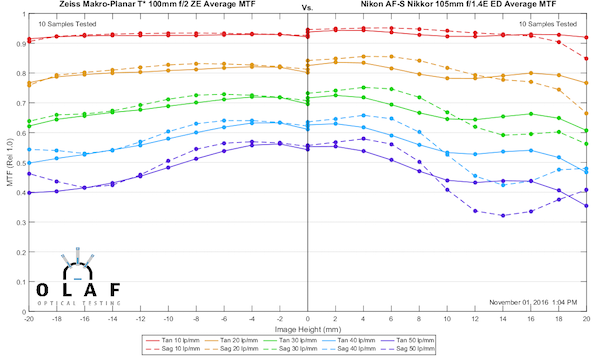
Olaf Optical Testing, 2016
Nikon 105mm f1.4 v Zeiss 135mm f/2 APO Sonnar
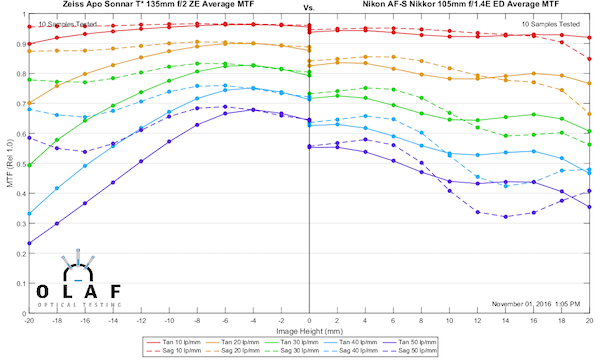
Olaf Optical Testing, 2016
Author: Roger Cicala
I’m Roger and I am the founder of Lensrentals.com. Hailed as one of the optic nerds here, I enjoy shooting collimated light through 30X microscope objectives in my spare time. When I do take real pictures I like using something different: a Medium format, or Pentax K1, or a Sony RX1R.
-
bokesan
-
Nick Korn
-
stevelink
-
Christian Nilsson
-
Max Manzan
-
Falk Lumo
-
Max Manzan
-
Jim Kasson
-
DaveHenson
-
decentrist
-
decentrist
-
John Koerner
-
Marc P.
-
John Koerner
-
Marc P.
-
Falk Lumo
-
Falk Lumo
-
Carleton Foxx
-
Cesjr86
-
DrJon
-
DrJon
-
James
-
John Koerner
-
James
-
John Koerner
-
James
-
John Koerner
-
John Koerner
-
John Koerner
-
Ed Bambrick
